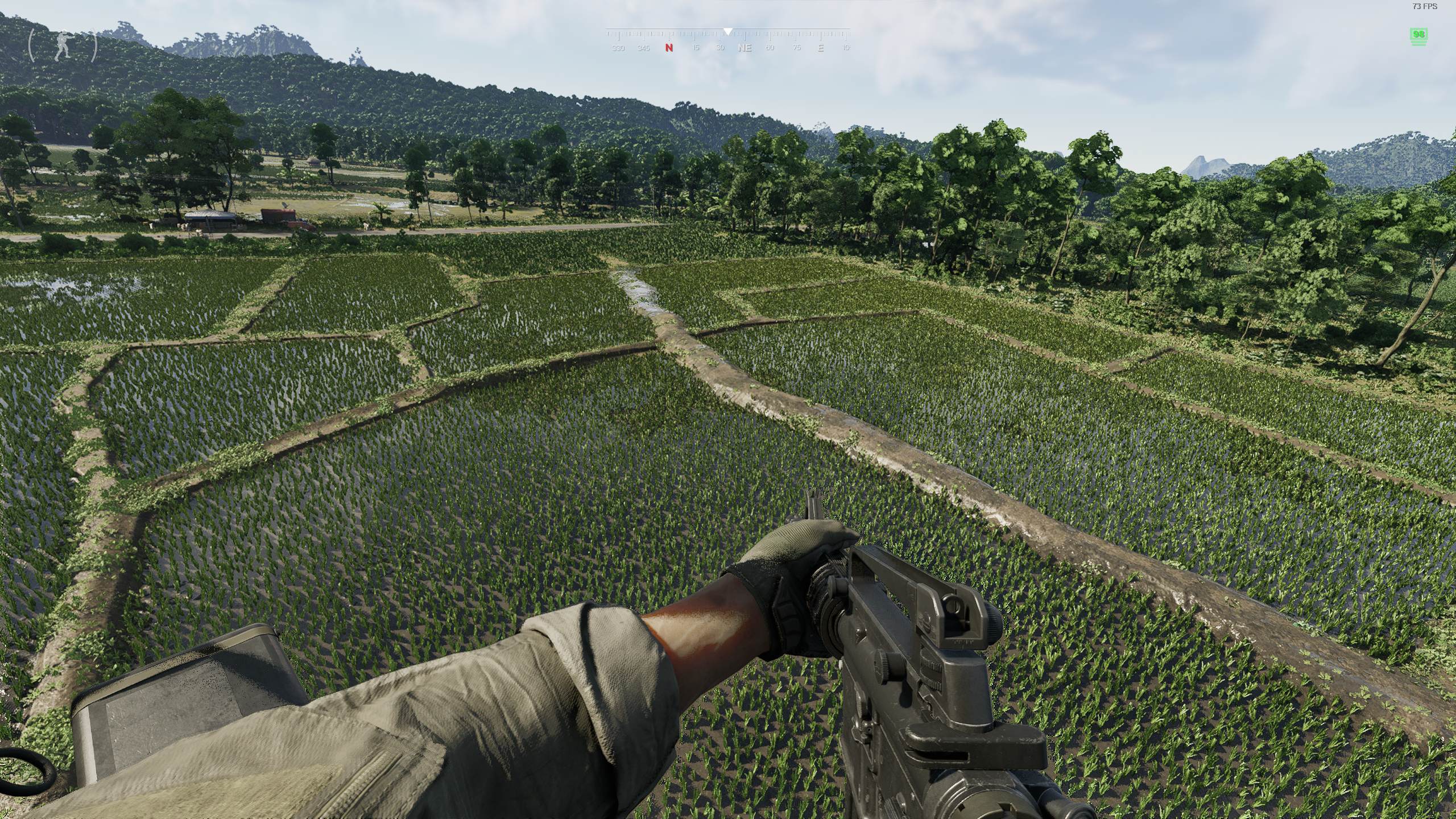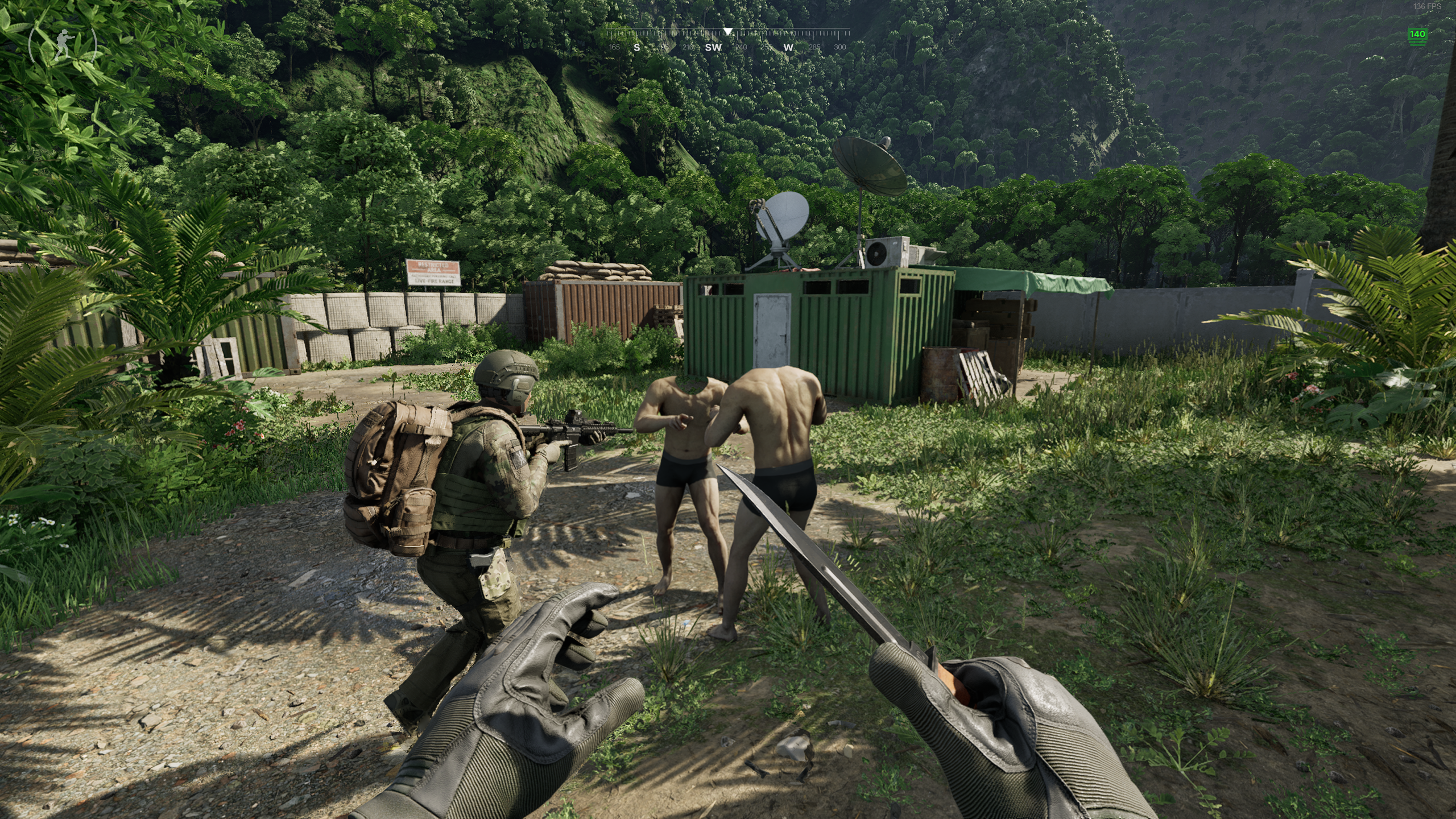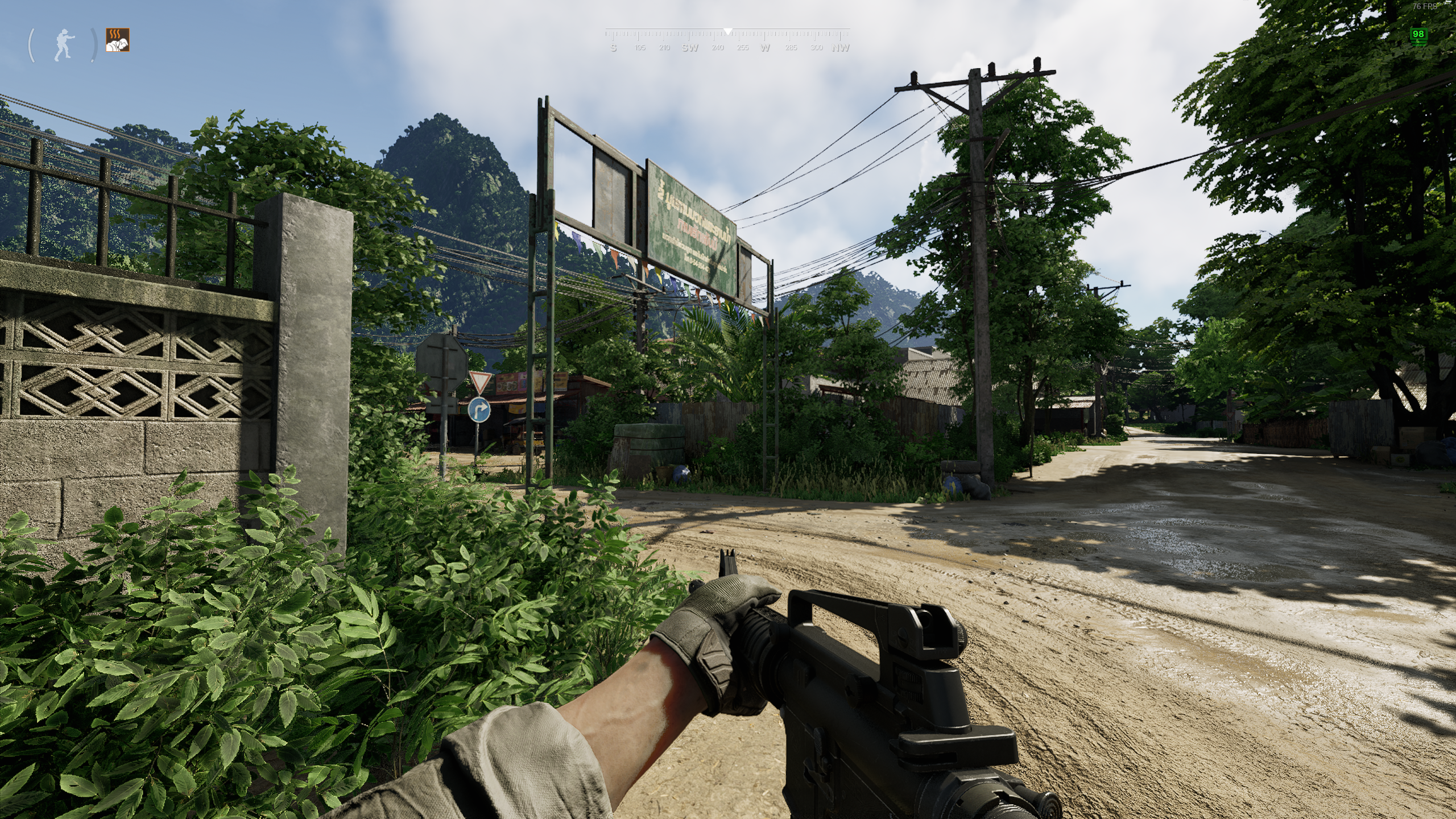Gray Zone Warfare delivers the odd hitch and stutter, but overall it's a reasonable Early Access ride
Some early niggles for sure, but otherwise our testing has been a fairly smooth experience.

Gray Zone Warfare is an extraction shooter with a lot to prove. Given that Escape From Tarkov seems to have rather publicly angered its fanbase over the previous weeks, it's no surprise that this tactical FPS made an initial surge to the top of the Steam best sellers list upon its release, as disgruntled fans looked for an alternative.
However, a glance at the Steam forums and Reddit reveals plenty of reports of initial performance issues for many users, with complaints of hitching, stuttering, and low frames overall, even on reasonable hardware. Oh, and some missing heads. The game has received a pair of hotfixes since then, although by the look of the notes they do seem to focus on server issues rather than performance optimisations.
Still, a good chance for some performance analysis at the very least, so we jumped into the game and recorded our results.
I tested the game on my personal system, which should be a decent representation of a good mid to high-end modern PC. Specs wise, it's rocking an AMD Ryzen 7 7700X in combination with 32GB of DDR5-6000 memory, with an RX 7800XT handling the graphics duties. My esteemed hardware overlord, Dave James, meanwhile, tested on his own system with a Core i9 10900K and the almighty RTX 4090. The perks of being boss, eh?
A choice of upscalers are available: FSR, DLSS, TSR, and XeSS. I gathered my initial results with FSR set to Quality, at 1440p with Frame Generation off at each graphics preset. My benchmarking run involved running a set route from base camp through dense jungle and foliage, before arriving and running laps around the first town with a lot of built-up architecture.
One thing I noted right off the bat was some traversal hitching and heavy pauses, particularly in the first hour or so of the game. This is likely shader compilation stutter, and while it was significant at the start I found it cleared up after a little bit of exploration. I've still experienced the odd stutter in new areas since, but overall the game seems to settle down reasonably well as time goes on.
Epic settings unsurprisingly produced the lowest numbers, although for the most part stayed in the mid to low 60s. I only noticed a minimal average fps change moving from dense foliage into heavily built up areas, and even low-flying helicopter runs with long draw distance vistas don't seem to phase my system beyond the very occasional micro-hitch.
The biggest gaming news, reviews and hardware deals
Keep up to date with the most important stories and the best deals, as picked by the PC Gamer team.
Interestingly, the difference between High and Medium settings was imperceptible in person, both in terms of performance and visual quality, with the Medium setting actually producing a slightly lower 1% result.

Low settings delivered a healthy average frame rate boost of 13-14 frames on average over Medium and High respectively, and I was surprised how good the game still looks with all the options turned down. It's quite a pretty thing, this game in motion, and I don't think many would be disappointed with the graphics overall if Low is what's needed to gain you a playable frame rate.
I performed the same runs across all settings with Intel XeSS enabled, and while the graphical quality was slightly improved over the same FSR settings if you really looked at the fine details, I did notice around a 5 fps drop on average. I've been a fan of XeSS over FSR in terms of visual quality where both are an option, but the FSR implementation here actually looks pretty good to my eyes, and gains you a decent few frames to boot.
As you may expect, the RTX 4090 system produced impressive results. At 4K Epic settings the big Nvidia card was able to deliver 92 fps on average, with 1% lows of 62 fps. That may come as no surprise given the power on offer from Nvidia's top-end chip, but shows that smooth 4K top settings gameplay is achievable if you have substantial hardware, while the sheer choice of upscaler settings gives you a decent shot even if you don't.
We also took a look at CPU and GPU load balance, as some had speculated that the game could be CPU bound. Our testing showed that overall the game seems well-balanced in CPU/GPU demand on both our early test systems, although we both experienced the odd frame time spike, which fits with the occasional hitching.
One thing to note, however, is the VRAM usage. On the RTX 4090 system with its 24GB of VRAM, we found that PresentMon reported 17.8GB of VRAM allocation at 4K and 16.5GB at 1440p. While it's not clear if this is the game simply grabbing large amounts of VRAM from a card that has plenty of it, without actually making use of it, it may go some way to explaining lower performance results others seem to have experienced with lower VRAM cards.
My 16GB RX 7800 XT experienced no VRAM related issues, and we also did some quick testing on an Intel Arc A770—also with 16GB of VRAM—and found it delivered decent performance, too. However, those attempting to play on cards with less may want to drop the settings down to minimise potential VRAM maxing issues.

A great equaliser here for those struggling with performance is the addition of Frame Generation. With FSR Frame Gen enabled, on Epic settings the RX 7800 XT soared into the 100-120 fps range. Those looking to play competitively might be concerned about potential latency, but I found I was able to keep up with the crowd at liquid smooth frame rates with Frame Generation activated, and the game looked lovely, too.

Best CPU for gaming: The top chips from Intel and AMD.
Best gaming motherboard: The right boards.
Best graphics card: Your perfect pixel-pusher awaits.
Best SSD for gaming: Get into the game ahead of the rest.
Overall then, despite initial reports, it seems that Gray Zone Warfare actually provides a relatively smooth ride with mid to high-end hardware. This is just based on our early testing, and we will be getting some lower-spec GPUs into the mix to see how the game fairs lower down the stack.
Still, while the odd stutter is particularly annoying early on even with high-end tech, putting a few hours in seems to have alleviated most of the issue. Although what's not yet fixed is the occasional server disconnect or lag.
The game seems to default to servers based in Asia, so if you're based in more Western climes it's worth double-checking to make sure you're connecting to a server near you for the best ping.
As an Early Access title, Gray Zone Warfare certainly has some jank and niggles still to shake off. But, it's a whole lot of fun, good looking, and in our testing ran fairly well for the most part. It's a demanding title for sure, but given that it still looks great on Low and has as many upscaler helping hands as you can shake a stick at, those running modern hardware should be able to wrangle it into delivering a very playable experience, at the very least.

Andy built his first gaming PC at the tender age of 12, when IDE cables were a thing and high resolution wasn't—and he hasn't stopped since. Now working as a hardware writer for PC Gamer, Andy's been jumping around the world attending product launches and trade shows, all the while reviewing every bit of PC hardware he can get his hands on. You name it, if it's interesting hardware he'll write words about it, with opinions and everything.

